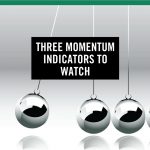Why Bond Yields Are Important (A Plain-English Primer), June 7, 2017
For more than two months, I’ve been talking about the increasingly concerning macro signals being sent by the bond market. During that time, stocks have traded great, hitting new highs amidst minimal volatility.
So, it’s logical to ask why I and many other analysts continue to point out these signs of non-confirmation of the rally from the bond market. After all, it hasn’t caused a problem in stocks, yet. But, I guarantee it will cause a problem (and potentially a painful one) if bond yields keep falling… it’s just a question of when.
Given that, I wanted to take a moment and explain more fully, and in plain English, why I’m watching the bond market so closely, and exactly what the bond market is saying about future economic growth and inflation.
First, I watch the bond market because it’s a better predictor of future 1) economic growth, 2) inflation, and 3) interest rate levels, compared to stocks or most economists estimates. Case in point, the bond market told us the financial crisis was coming when the yield curve inverted over a year before the turmoil, and well before Fed Chair Bernanke said subprime was “well contained.”
The joke is that bonds are more accurate because the smartest people on Wall Street always end up on the fixed-income desks (it’s why we call it the “smart market”). And while that may be true (and I can say that as I was an equities guy), in reality bonds are better forecasters of these variables because A) The bond market is much larger and more liquid then the stock market, and B) Stock prices, at their core, are just discounted estimates of corporate cash flows, and there are a lot of variables that go into those future cash flows that are very company specific.
Conversely, in the bond market, everything trades off a spread to Treasuries, and Treasuries price off expectations for 1) growth, 2) inflation and 3) future interest rate levels. Point being, there are less variables in the bond market, and the market is more liquid. That equals more efficiency.
Right now, that more efficient market is screaming that future economic growth and inflation will be disappointing, and that the Fed is going to hike rates, regardless.
The disappointing economic growth and inflation can be extrapolated from the decline in the 10- and 30-year Treasury yields. They fall because markets expect lower longer-term economic growth and inflation, which equates to a lower rise in interest rates over the longer term. After a brief bump in late ’16, the 10- and 30-year yields are telling us that the slow-growth economy is here to stay (so around 2% GDP growth).
However, in the short term, 2-Year Treasury yields are the best bond proxy for bond market expectations for the Fed funds rate, and that keeps rising (the 2-Year Treasury yield has risen from 1.2% to 1.32%). So, what the long end of the curve is saying is that rates may not go as high as we thought at the start of 2017 because of poor growth and low inflation. However, the short end of the curve (2-year yields) are saying that right now, the Fed will continue to hike rates.
More specifically, maybe Fed funds will be 1.5% in a year (so 2-year yields rise) but it’ll only get to 3% over the next four years (so 10- and 30-year rates fall). I’m making those numbers up, but you get the point.
Why does this matter to stocks? Because the short term aside, neither you nor I want to be overweight stocks at 18X earnings in a slow-growth and rising rate environment.
Think of it this way: From 2015 to 2016, earnings growth was flat and stocks went nowhere and volatility was high. Then, last year, earnings growth started to be revised higher, and stocks have rallied.
If the bond market is right about economic growth prospects and interest rate hikes, then that will hit expected earnings growth, and stocks will fall.
From a “how to play it” standpoint, the blueprint is clear. Defensive, higher-yielding equities like consumer staples (XLP) and utilities (XLU) (two of the best-performing sectors in 2017). Additionally, international exposure (Europe via HEDJ, EUZ) and emerging markets (IEMG).
Conversely, this set up will be very bad for banks, and the current selling is just the beginning if yields correctly forecast slowing growth. Finally, while they’ve held up well, it’s unlikely tech will be able to continue to rally longer term.
Bottom line, the signals in the bond market are important because they are telling us lower growth and inflation are coming, but with higher interest rates. That is a very bad set up for stocks at such stretched valuations, and that’s why we’re watching the bond market so closely.
Join hundreds of advisors from huge brokerage firms like Morgan Stanley, Merrill Lynch, Wells Fargo Advisors, Raymond James and more… see if The Sevens Report is right for you.


